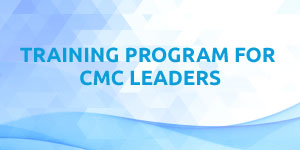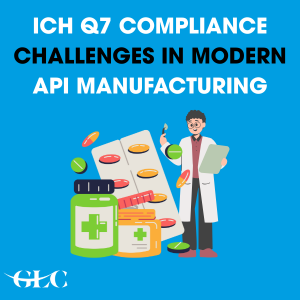Free knowledge to monitor the world of events. Have a look at our must read Blogs on Pharma, Finance, HR, Health and Cross Industry.
ICH Q7 Compliance Challenges in Modern API Manufacturing
2022-08-16
Understanding ICH Q7 and Why It Matters?
ICH Q7 guideline defines Good Manufacturing Practice (GMP) for Active Pharmaceutical Ingredients (APIs), including systems of quality, facilities, personnel, documentation, production controls, materials management, validation, and supply chain control. Regulatory bodiessuch as the FDA, EMA, Health Canada, and PMDArequire full compliance with ICH Q7 for API production and often cite it during inspections and market approval.
Key Compliance Challenges Today
1. Quality Management & Quality Culture
- A well-working Quality Management System (QMS) is crucial for Q7 implementation, but a lack of senior management support and/or under-resourced quality functions prevents many firms.
- Siloed implementations don't succeed because chapters of Q7 are not applied in a whole, relational mannere.g., training, validation, and change controls need to be coordinated with documentation.
2. Data Integrity Issues
- Common deficiencies include falsified batch records, missing logbook entries, manipulation of OOS results, and backdating.
- The majority of firms are still "doing the bare minimum," instead of embedding a culture of integrity and proactive surveillance, resulting in repeated non-compliance.
3. Supplier Qualification & Supply Chain Complexity
- Globalized supply chains produce material-sourcing, labeling, and traceability risks. Sole reliance on Certificates of Analysis (CoAs) without audit, secondary testing, or requalification is a frequent inspection finding.
- Written quality agreements documenting responsibilities and roles are required by regulatory authorities, especially when using CMOs, brokers, or relabelers.
4. Validation & Cleaning Controls
- Inadequate cleaning proceduresincorrect grade of water utilized, skipping visual residue checks, no hold times specifiedlead to tainted lots and FDA actions.
- Process validation, method validation, and cleaning validation are required but often poorly executed or not well documented.
5. Gaps in Personnel & Training
- Job responsibilities and functions of staff must be defined and documented based on Sections 3 and 4 of ICH Q7, but there remain weak points when workers are under-trained or audited.
- Routine competence assessment and retraining programs are commonly overlooked but expected.
6. Change Control and CAPA Systems
- Change control is a Q7 cornerstone: all deviations should be documented, investigated, risk-assessed, and closed with corrective/preventive actions (CAPA).
- Reactive systems where CAPA occurs only after failure correspond to an immature quality culture.
Why These Challenges Persist?
- ICH Q7 is viewed by most manufacturers as a checklist and not as an integrated management system and hence leads to patchwork compliance.
- Outsourcing is complicated without transparency if the oversight responsibilities are scattered.
- Legacy systems, disconnected documentation platforms, and noninteroperable ERP/LIMS systems jeopardize data integrity and traceability.
Strategies to Address Compliance Challenges
- Build a Mature Quality Culture
- Create leadership-driven QMS, where accountability is unambiguously assigned to each departmentnot just quality teams.
- Incorporate training, documentation, validation, and change control so that every step supports quality.
- Enhance Data Integrity
- Require controlled electronic or paper records, lock blank forms, avoid retrospective entries, and investigate OOS results rigorously.
- Conduct mock regulatory audits and internal data integrity reviews on a regular basis.
- Preserve Supplier Monitoring
- Audit large suppliers, compare CoAs against in-house analysis, and have quality agreements even for relabelers or brokers.
- Validate Processes and Equipment
- Create cleaning validation procedures with defined hold times and visual inspection standards.
- Recurrently revalidate process stepsespecially after equipment change or source changes to material.
- Invest in Personnel Development
- Map training programs against GMP expectations. Track competency through outcomes and update training. Welcome new joiners with full Q7 background.
- Execute Risk-Based Change & CAPA Management
- Use risk assessment tools (ICH Q9-aligned) to drive change control decisions.
- Include issue logs, root cause analyses, and CAPA follow-ups as part of your continuous improvement cycle.
Summary
Achieving ICH Q7 compliance in modern API manufacturing involves more than paper proceduresit involves quality-rich culture, systems in alignment, and proactive governance. Although the challengesstarting from data integrity to managing suppliersare formidable, organizations with role clarity, validated process, and training investment and risk-based systems have the potential to move from reactive compliance to sustainable control.
Deploying these tactics not only insulates the API from inspection risksbut also produces a resilient, globally competitive API operation that meets regulator requirements and ensures risks to patient safety.
Do you want to understand more? Join our upcoming ICHQ7 Compliance challenges in modern API manufacturing Masterclass
By Shara Najimudeen, Digital Marketing Executive, GLC Europe, Colombo Office, Sri Lanka.
Get a feel for our events

Training Program for CMC Leaders - EU edition
27th October 2025 - 16th January 2026
Rich with practical insights and real-world applications
learn more >>
Training Program for CMC Leaders - US edition
27th October 2025 - 16th January 2026
Rich with practical insights and real-world applications
learn more >>
Mastering the Common Technical Document (CTD) for Biologics Masterclass - EU edition
12-16 January, 2026
From guidelines to submissions
learn more >>















